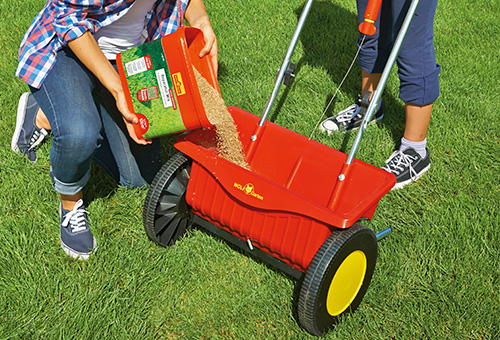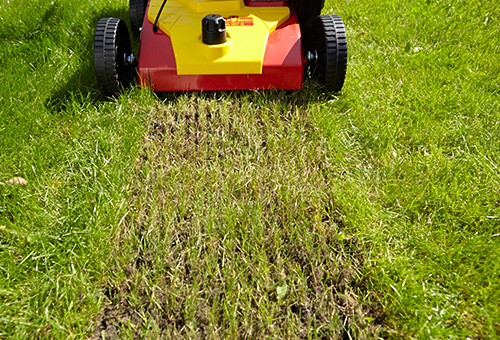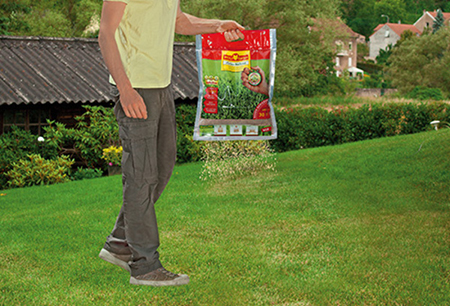Experienced lawn enthusiasts swear by the cleaning action of scarification, which effectively removes thatch from your lawn. Thatch is a fibrous layer of plant matter and grass cuttings which forms on the surface of the lawn and can act as a semi-waterproof cover.
When left untreated, it can prevent proper aeration, which stops moisture getting through to the lawn and increases the risk of disease. Scarifying and raking your lawn regularly can help to prevent the build up of thatch.
A rotating roller cuts into the soil at the surface to loosen up thatch, moss and weed roots. The dead organic material is subsequently either collected in the catch basket or removed from the surface of the lawn using a rake. This ensures that the grass gets air to breathe and water to grow. Applying lawn feed after scarification will provide the nutrients it needs to recover.

1. Fertilising
Your lawn should be allowed time to regenerate before scarification. At the beginning of spring, scatter a high-quality lawn fertiliser so that the hungry grass that had been stressed by the winter can grow more strongly. When the mowing season starts, mow your lawn two or three times before scarifying it for the first time.

2. Scarification
Now scarify the lawn thoroughly - ideally several times - across both the length and the width. Always ensure that the blades only touch the ground lightly so as not to cut it up. Scarifying too deeply damages the grass roots and wears the blades of the scarifier, so always pull quickly across the area. View our scarifiers here.

3. Reseeding
After treating the whole lawn you can make minor corrections to the surface of the soil by adding or removing topsoil where it is needed. Small gaps caused by the scarification will close up by themselves.